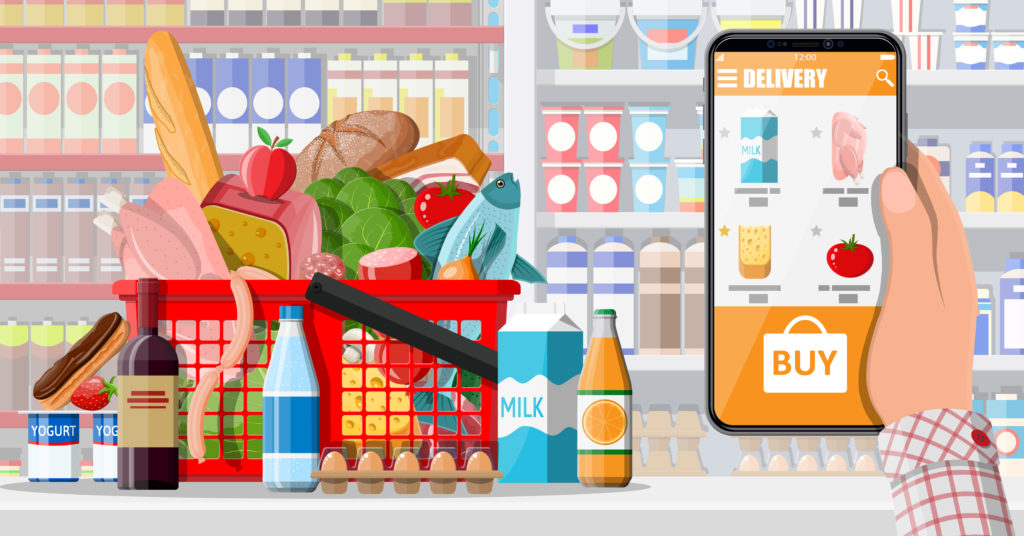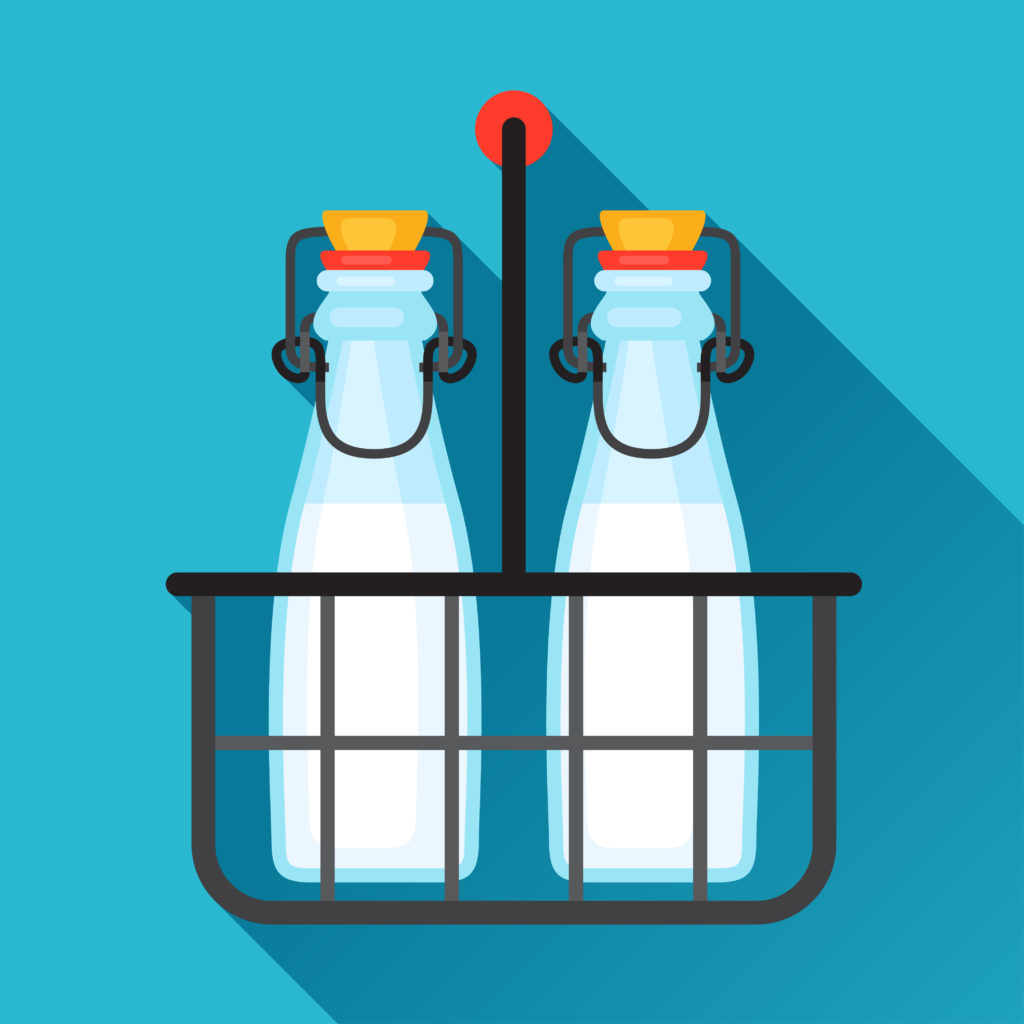
-
-
Products
- Industries
- Learn
- Partner
-
- Try Now
The least professionals wish for is to purchase and eat fresh food in a world where they strive to strike a balance between work and home. Almost as if they were wishing on a star and seeing their wish being granted. A large part of this problem has been alleviated by on-demand delivery services. In addition to fresh groceries, you can now order milk and dairy products online through an online milk delivery business.
A mobile app for milk delivery allows customers to view delivery routes, mark their orders as delivered, and receive real-time notifications at their location. After all, milk no longer needs to be delivered in slow milk floats. Customers can order dairy products on-demand from their mobile apps, and milk delivery businesses will send their drivers on push motorbikes to the dairy and deliver it to their customers. The process is quick and easy, just like ordering groceries on-demand.
We can provide you with the best online dairy milk delivery solution that will help you automate your milk delivery operation and let your customers customize a schedule according to their needs.
A look at the current state of the milk delivery industry
The milk delivery business is classified as a dairy wholesale business. The industry consists of companies that wholesale products such as cheese, ice cream, frozen dairy products, packaged liquid milk and cream, raw milk and cream, butter, yogurt, and other dairy products.
- In 2021, the Milk industry will generate $52,759 million in revenue. The market is predicted to increase at an annual rate of 8.65%. (CAGR 2021-2026).
- In terms of worldwide revenue, China (US$55,844m in 2021) generates the most.
- In 2021, per person revenues of US$37.86 are earned, based on total population numbers.
- By 2026, volume in the Milk sector is predicted to reach 83,723.9 kg.
- In 2022, the Milk industry is predicted to rise by 1.6 percent in volume.
- In 2021, the average volume per person in the Milk industry is predicted to be 52.0kg.
The milk delivery industry is a lucrative business endeavor that is accessible to every budding entrepreneur to enter and develop his or her own business; you may opt to start small without a shop or on a large scale with standard milk retail locations and a strong web presence.
The hyperlocal delivery system serves a small geographic region and provides speedy delivery of products that meet customer needs in a short period of time. Several start-ups have cropped up to satisfy the consumer’s ever-changing daily needs, promising fast order delivery and services at their doorstep.
More customers, more incomes, and a greater focus on nutrition are expected to increase demand for dairy products in the coming years. In many developing countries, demand for high-quality dairy products is increasing, as is production. In urban areas, consumption of processed and packaged dairy products is growing.
How to begin with the milk delivery business
Milk may be obtained either directly from a farm dairy where locals have cattle and distribute it, or pasteurized milk can be purchased in packets from milk processing factories. Despite the length of the milk supply chain, it is the milk distributors who make it available to us. You’re more likely to go to a nearby dairy kiosk or use a milk delivery service that delivers milk to your doorstep.
To make sure their product reaches the customers, companies have a vast distribution channel. This leads to an increase in the milk distribution business which is one of the most important steps in this whole chain and is one of the lucrative business opportunities because there is an increase in small-scale businesses and it is one of the busiest ones we have.
The selection of a particular business model to follow is a must. You can begin with your milk delivery business using these two types of business models.

Milk Delivery Service Business Models:
There are two sorts of business models for this type of business:
- The Retailers Model: This model is appropriate for whole-sellers that sell dairy products and want to expand their business online and provide customers with doorstep delivery.
- The Dairy Business Model: If you own a popular dairy farm and sell to restaurants, organizations, and institutions, this is the model for you. You might want to consider taking your business online and accepting bulk orders and payments. This will assist you in effectively managing and monitoring your inventory and revenue.
In other words, the retailer model is focused on a B2C approach where the milk and other dairy products are delivered to the customer’s doorstep. On the other hand, the diary business model depicts a more B2B approach where the milk is delivered in bulk to businesses like restaurants, etc.
Let us walk you through a few pros to start a milk delivery business –
| Little startup costs required | The cost to start a bread and milk delivery business costs significantly less money than most businesses, ranging anywhere from 62 to 35,923. |
| High customer retention rates | Once a customer invests in your product, they’ve invested their time and energy to utilize your product/service which is highly valuable to them. Typically, your product or service becomes indispensable to your customer. |
| Unlimited income potential | With starting a bread and milk delivery business there is no cap as to how much income you can make. The stronger your business skills and the more energy/time you put into your career, the more you’ll make. |
| Local Community | One of the best parts of starting a bread and milk delivery business is that you can develop a local following by selling your products at craft shows, farmers’ markets, or even local storefront businesses! This gives you access to additional revenue streams and loyal customers. |
3 big challenges for a milk delivery business
- Increasing basket size – With the difficult unit economics of milk alone and the necessity to offer a comprehensive range, you’ll need to be able to persuade them to get a lot more than simply milk or emergency supplies like bread, toothpaste, sanitary pads, and so on. With morning deliveries, you as a customer are less likely to perform your monthly grocery shopping and instead rely on this delivery model for solely top-up grocery shopping. Another issue for businesses is that on the cost-convenience buying decision matrix, consumers who prefer convenience as a greater value proposition become more active users. The actual issue with low per capita income and high time availability is that consumers place a high value on convenience while placing a low value on cost. It is restricted to the high disposable income professional class that exists in specific portions of metros and is not a large market, as even well-funded consumer start-ups have discovered the hard way. As a result, raising the Basket Size is a significant task, or your business appears to be unscalable.
- Non-dense apartment cluster unit economics – When you try to make deliveries before 7 a.m. by leaving the package outside the door, you obtain lovely delivery productivity of a minimum amount per drop, but the addressable market suffers. Executing the delivery strategy in metros — colonies that were established before 2000, such as independent homes or builder floors, becomes a difficulty since package security is compromised. When the model expands to older parts of these cities, keeping low delivery costs in the face of small basket sizes becomes a danger.
- The threat by the existing giants – This is widely regarded as the most serious threat facing any consumer online store in the United States, where Amazon has begun to resemble a dangerous mammoth incumbent crushing machine capable of wiping out billions of dollars in market capitalization simply by announcing entry into a new segment.
Core features for a milk delivery service
Our milk delivery software solutions are made full of customized user-friendly features. With an end-to-end ordering and delivery solution we provide – catalog management, real-time analytics, route optimization, automated dispatch, and much more. Further, giving you the freedom to operate, and schedule the orders as required. Here is a list of basic features that customers normally wish to see in their apps:
- Customer Management – Helps in accessing customer profile, their demographics, payments and order history, and recurring orders for some specific tenure.
- Product Management – The featured products on the platform should be customizable to control user behavior from “recurring only” to pre-ordered products.
- Billing Management – There must be an adjustment to bill the clients before/after delivery, after the cut-off time, once a week or over the weekend, or every Friday.
- Route Management – The system should be able to assign the on-route customers automatically. The algorithm should be able to visualize the route stops and suggest the best routes.
- Order Management – The system should be able to track and fulfill all the clients’ orders, their data, and location history.
- Communication Management – The app will work wonders if the flow of communication is inhibited between the customer and the concerned business followed by the smooth delivery of transactions.

On-demand milk delivery app modules:
Customer App
- Registration and Login
- Setting Delivery Location
- Search and View Products
- Explore Product Details
- Contact Delivery Guy
- Check and Apply Referral Codes
- Order Cancellation
- Check Order History
- Mark An Order As Favourite
- Repeat Order
- View Order Status
- Secure Online Payment
- Rate Delivery Man
- Track The Order Live
- Help & Support
Driver App
- Enable GPS for easy pick-ups and drop-offs
- Direct communication with customers
- View order visibility
- Registration and Login
- Upload documents
- Receive Orders
- Manage Multiple Deliveries
- Update Delivery Status
- View Drop Off Location & Navigation
- View Delivery History
- Push Notifications & Alerts
- Contact Customers
- Receive Payments
- Contact Milk Store or warehouse
- Choose Service Area
- Link Bank Account
- Set Availability
- Customer Care Help & Support
Admin Panel
- Registration and Login
- Dashboard to manage users, manage a business, manage delivery staff and manage orders, track delivery agents, manage revenue, manage promo codes & discounts, resolve complaints, returns, and refunds, wallet integration, real-time analytics, reviewing feedback, managing adding or removing products, managing inventory, customer-specific offers
- Overseeing incomes and outgoings
- Performance tracking
A few existing players in the milk delivery industry:
- Manhattan Milk
- Drink Milk in Glass Bottles
- Crescent Ridge
- Mylkman
- Oberweis Dairy
- Bay Area Milkman
- Doorstep Dairy
- Milkbasket
- MilkLane
How much does it cost to create a milk delivery app:
With the defined features and modules a milk delivery app must-have, the cost to the building would range from ~$1000-$20000. The development costs majorly vary depending on the list of features incorporated in the application. This is an estimated range for on-demand app creation.
What are the attributes of a successful milk delivery business?
To ensure a feature-rich, fully-functional deliverable, your milk delivery app must include the following characteristics:
- Assured delivery early morning every day
Milk and milk-based products are kitchen necessities that are needed first thing in the morning to get the day started. Every morning before 7 a.m., a quality milk delivery app should offer free delivery of all things.
- No minimum order
This is another vital attribute that persuades more and more customers to buy from you.
- Order late, get it by early morning
Working adults who struggle with long office hours each day make up a sizable portion of milk delivery app customers. To make life easier for these individuals, your app should allow them to add anything they desire to their basket at any time until midnight and have fresh products delivered to their door the next morning.
- A hassle-free refund policy
A simple refund policy helps to build customer trust in the app. They are much more likely to order from your app if they know they can refund it, in case the product quality is not up to the mark.
- Discounts on everyday items
Attractive deals and daily discounts drive further sales while also keeping users interested.
- A range of branded products
For aggregator apps, it is a great idea to sell a wide assortment of branded products to draw more customers.
- Quick and easy payment methods
Payment checkouts, OTPs, and CVVs at every transaction are a major turnoff for users, especially those who shop frequently. A popular milk delivery app has a simple top-up wallet that allows users to continue buying without having to enter CVV or wait for OTP every time they buy something.
How to build a milk delivery app?
Now, on to the final step of how you can create a milk delivery app. Jungleworks tech suite will help you launch a milk delivery business successfully with the end-to-end ordering and delivery platform.
Yelo by Jungleworks will help you kick start your online hyperlocal business with ease. Yelo will assist you in streamlining your order and delivery processes through a powerful online marketplace platform for every business type. Sign up today and explore the path to turn your dream business into a reality.
Subscribe to stay ahead with the latest updates and entrepreneurial insights!

Subscribe to our newsletter
Get access to the latest industry & product insights.






















